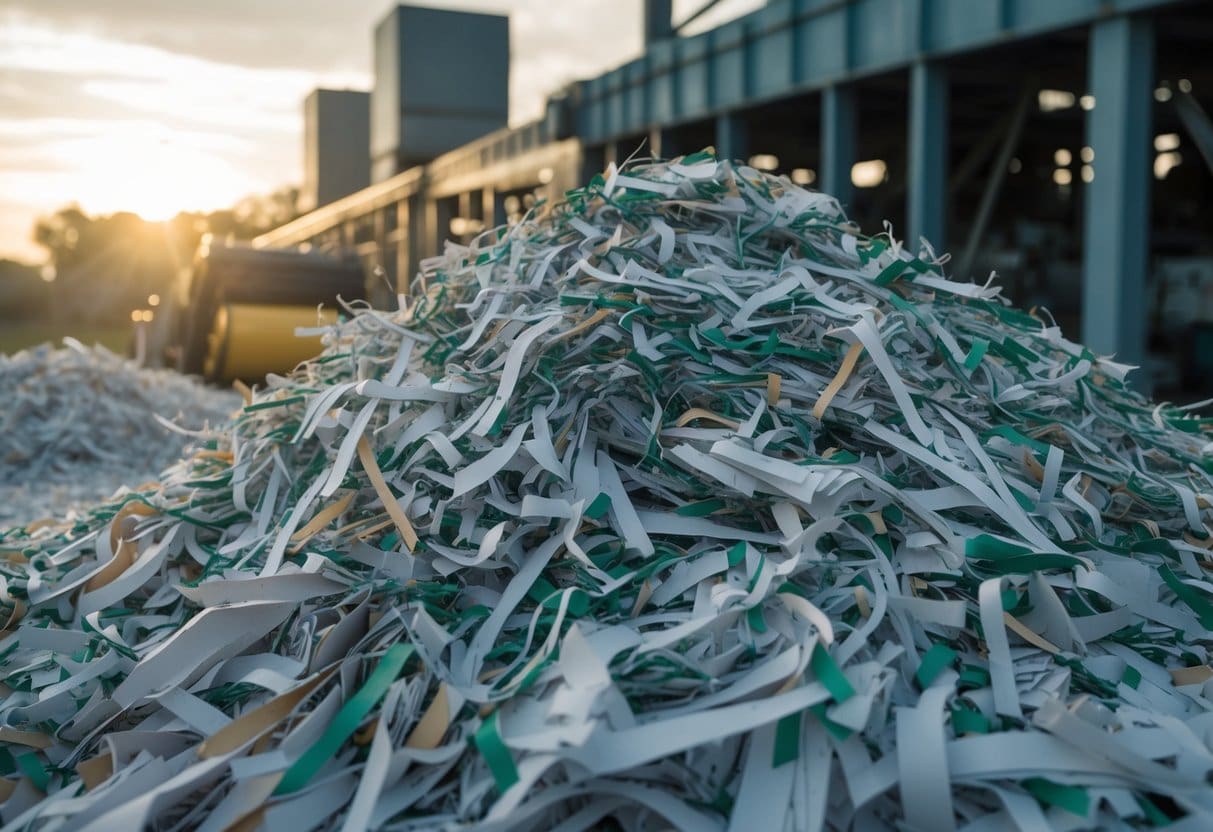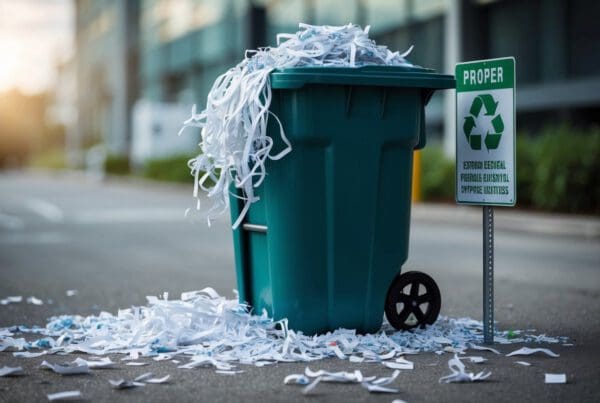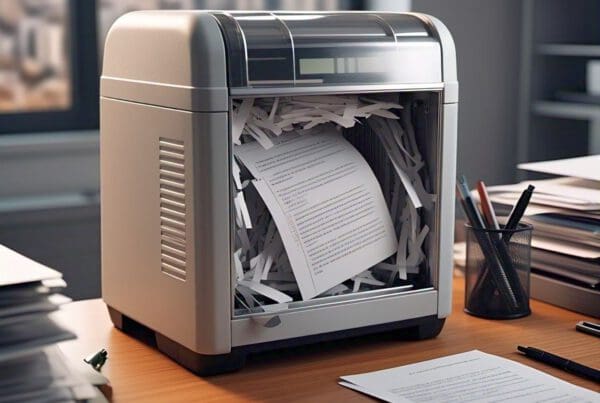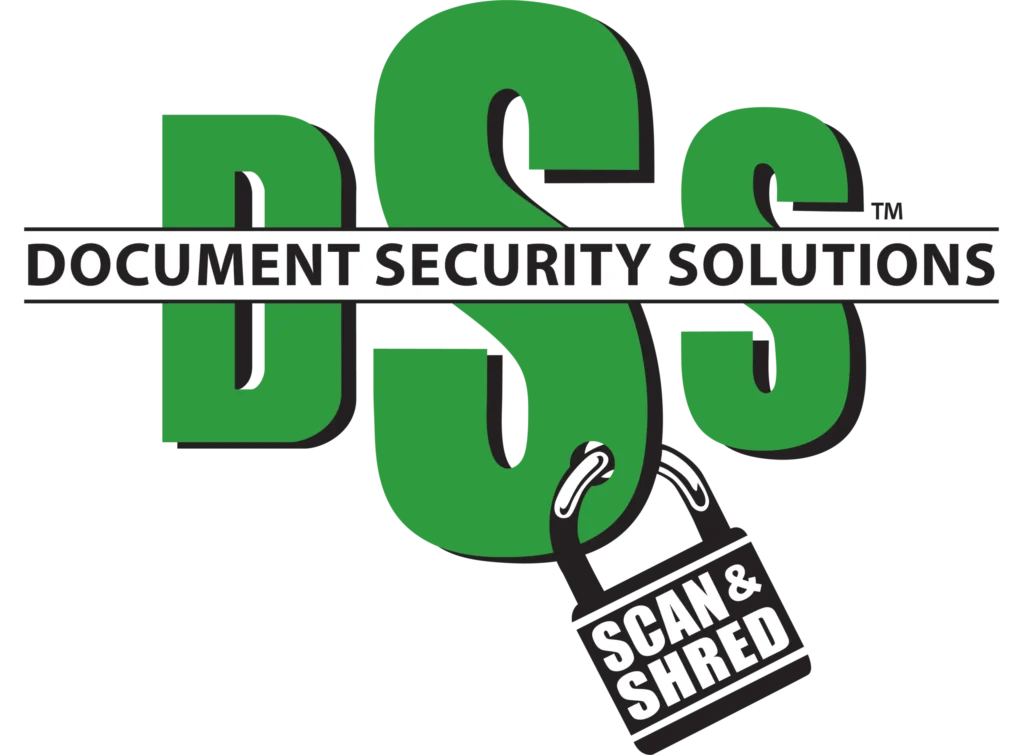Understanding Recycling and Paper Waste in Georgia

In Georgia, paper waste has a significant impact on the environment, and recycling plays a crucial role in addressing this issue. Our state’s infrastructure and goals focus on reducing landfills and improving sustainability.
Paper Waste Dynamics
Paper waste makes up a large portion of our local waste streams. Every year, tons of paper products, from newspapers to packaging, end up in landfills. Shredded paper poses a specific challenge due to its small size, which can be problematic for sorting systems. By understanding how paper waste accumulates, we can better approach recycling strategies.
We generate waste in various sectors—residential, commercial, and industrial areas. These sectors contribute differently to total waste. Efforts to manage paper waste require us to know where most of it comes from and how we can intercept it before it reaches landfills.
Recycling Infrastructure
Georgia’s recycling infrastructure has improved, yet challenges still exist. Numerous facilities process paper waste, but shredded paper often requires special handling. Our recycling centers are equipped to handle typical paper products, but shredded paper might need separate collection bins or equipment. By improving these processes, we make recycling shredded paper more efficient.
Recycling programs across the state provide guidelines on sorting and disposing of paper waste. Public awareness campaigns help residents understand how to recycle effectively. Optimizing these programs involves collaboration between individuals, businesses, and municipal services.
Sustainability and Environmental Protection Goals
Our sustainability goals focus on reducing our carbon footprint and preserving natural resources. Recycling paper, including shredded forms, is vital to achieving these goals. By doing this, we minimize deforestation and save energy. The importance of such initiatives is evident in state policies that encourage recycling and the development of sustainable products.
Environmental protection efforts in Georgia emphasize responsible waste management. This is not just about recycling but also involves rethinking production and consumption. Encouraging the use of recycled paper products is part of a broader strategy to create a sustainable future for Georgia.
The Lifecycle of Recycled Paper

Recycled paper goes through several key steps from collection to reuse. These steps involve collecting and sorting the paper, processing it into new materials, and then creating recycled products.
Collection and Sorting of Shredded Paper
First, we gather shredded paper from homes, offices, and businesses. It’s crucial to keep it separate from other types of waste. Recycling facilities often provide bins specifically for paper waste.
Once collected, the paper is sorted to remove contaminants like plastic and metal. Sorting helps improve the quality of the recycled paper. Materials are divided based on type and grade. This step ensures that the recycling process runs smoothly and efficiently.
The Recycling Process
Next, we move on to the actual recycling process. The sorted paper goes to a recycling facility where it’s mixed with water to create a pulp. This pulp is then cleaned and de-inked.
Special machines remove any remaining adhesives, dyes, or chemicals. This results in a clean pulp, which is essential for producing high-quality recycled paper.
Finally, the pulp is spread onto screens to form new sheets of paper. These sheets are dried and rolled out for use in creating new products.
End-Use of Recycled Paper Products
The recycled paper is then transformed into a variety of products. We see it in items like notebooks, cardboard, and even tissue paper. Some of it may be used in composting, while others are perfect for packaging materials.
Using recycled products helps reduce energy consumption and limits solid waste. It provides us with eco-friendly options, supporting sustainable practices across industries. This end-use stage is critical, as it completes the paper’s lifecycle and contributes to the broader goal of waste reduction.
The reuse of recycled paper not only benefits the environment but also encourages responsible material management. Through these steps, we help conserve natural resources and promote a healthier planet.
The Benefits of Shredded Paper Recycling

Recycling shredded paper offers a variety of advantages, including environmental protection and resource conservation. Additionally, we emphasize the importance of secure destruction of sensitive information.
Environmental Advantages
Recycling shredded paper helps us reduce greenhouse gas emissions. By reusing paper fibers, we cut down the need to produce new paper, saving natural resources like trees and water. This process decreases the waste management burden and lowers the volume of trash sent to landfills.
When we recycle, we also prevent contamination of recyclable materials, contributing to increased recycling rates. By maintaining environmental responsibility, we play a part in minimizing pollution and promoting environmental protection.
Economic Impact and Energy Savings
Using shredding services not only ensures document security but also has economic benefits. Recycling shredded paper requires less energy compared to producing new paper, leading to energy savings. This reduction in energy use means lower production costs, which can positively impact local economies.
Waste reduction also lessens the strain on public waste facilities, reducing operational costs and extending the lifespan of landfills. These factors combined can lead to lower waste management expenses, benefiting communities financially.
Secure Solutions for Sensitive Documents
Recycling shredded paper provides a secure way for us to handle confidential documents. Document shredding ensures that sensitive information is destroyed before entering the recycling process. This step protects our privacy and aids in document destruction.
Shredding services offer an added layer of security, making it difficult for unauthorized parties to access confidential information. By responsibly managing shredded documents, we prioritize the protection of individual and business data while contributing to resource conservation efforts.
Innovations in Paper Recycling Technology
In Georgia, we see a rise in innovations in paper recycling technology aimed at boosting efficiency and sustainability. The shredding process is now more advanced, allowing us to handle shredded paper more effectively. Secure destruction is a priority, with on-site shredding methods ensuring privacy and reducing risks.
Our cities are expanding single-stream recycling and curbside recycling programs. This makes it easier for everyone to recycle without sorting, increasing participation rates. Recycling bins are popping up everywhere, from residential areas to commercial zones, simplifying how we manage recyclable paper products.
Meanwhile, improved de-inking technology helps extract ink from paper during recycling. This means better-quality paper pulp and more high-grade recycled paper products. By using more recycled materials, we help cut down on deforestation and conserve natural resources.
Efficient recycling methods lower carbon emissions by reducing the need for landfill disposal. By embracing these eco-friendly practices, we’re playing our part in promoting sustainable practices. The importance of shredded paper recycling cannot be overstated, as it turns waste into valuable resources.
Through collaboration, we strive to develop more innovative solutions that align with both environmental goals and practical needs. It’s crucial to stay informed about these advancements and work together to implement them effectively.





